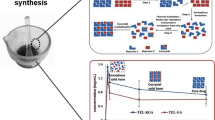Abstract
Studies of active drug-excipient compatibility represent an important phase in the preformulation stage of the development of all dosage forms. For the development of conjugation estrogens and medroxyprogesterone acetate (MPA) double-layer tablets, techniques of thermal, isothermal stress testing (IST), and molecular vibrational spectroscopy analysis were performed to access the compatibility. Differential scanning calorimetry (DSC) studies were used as an important and complementary tool during preformulation to determine drug-excipient compatibility. On the basis of DSC results, MPA was found to be compatible with polyethylene glycol 6000. However, the results of Raman and IST studies showed that all the excipients defined in the prototype formula were found to be compatible with MPA. Overall, the compatibility of selected excipients with MPA was successfully evaluated using a combination of thermal and IST methods, and the formulations developed using the compatible excipients were found to be stable.












Similar content being viewed by others
References
Hall JA, Morton I (1999). Concise dictionary of pharmacological agents: properties and synonyms. Springer, New York, p. 173. ISBN 978-0-7514-0499-9.
MedroxyPROGESTERone: Drug information provided by Lexi-Comp. Merck Manual. 2009. Retrieved 8 July 2010.
Patra CN, Kumar AB, Pandit HK, Singh SP. Design and evaluation of sustained release bilayer tablets of propranolol hydrochloride. Acta Pharm. 2007;57:479–89.
Uekama K, Matsubara K, Abe K, Horiuchi Y, Hirayamma F, Suzuki N. Design and in vitro evaluation of slow-release dosage form of piretanide: utility of beta-cyclodextrin: cellulose derivative combination as a modified-release drug carrier. J Pharm Sci. 1990;79:244–8.
Bruni G, Berbenni V, Milanese C, Girella A, Marini A. Drug-excipient compatibility studies in binary and ternary mixtures by physicochemical techniques. J Therm Anal Calorim. 2010;102:193–210.
Ganesh G, Ramadoss A, Kannan PS, SubbiahPandi A. A Crystal growth, structural, thermal, and dielectric characterization of Tutton salt (NH4)2Fe(SO4)2·6H2O crystals. J Therm Anal Calorim. 2013;112:547–54.
Yan G, Li H, Zhang R, Ding D. Preparation and evaluation of a sustained-release formulation of nifedipine HPMC tablets. Drug Dev Ind Pharm. 2000;26:681–6.
Fassihi RA, Ritschel WA. Multiple-layer, direct-compression, controlled-release system: in vitro and in vivo evaluation. J Pharm Sci. 1993;82:750–4.
Lopes CM, Sousa Lobo JM, Pinto JF, Costa PC. Compressed matrix core tablet as a quick/slow dual-component delivery system containing ibuprofen. AAPS PharmSciTech. 2007;8:E76.
Maggi L, Machiste EO, Torre ML, Conte U. Formulation of biphasic release tablets containing slightly soluble drugs. Eur J Pharm Biopharm. 1999;48:37–42.
Ford JL, Timmins P, In: Rubinstein MH, editor. Pharmaceutical thermal analysis: techniques and applications. Chichester: Ellis Horwood; 1989. p. 201–237.
Wang Z, Horikawa T, Hirayama F, Uekama K. Design and invitro evaluation of a modified-release oral dosage form of nifedipine by hybridization of hydroxypropyl-beta-cyclodextrin and hydroxypropylcellulose. J Pharm Pharmacol. 1993;45:942–6.
Sims JL, Carreira JA, Carrier DJ, Crabtree SR, Easton L, Hancock SA, Simcox CE. A New approach to accelerated drug-excipient compatibility testing. Pharm Dev Technol. 2003;8:119–26.
Clas SD, Dalton CR, Hancock BC. Differential scanning calorimetry: applications in drug development. Pharm Sci Technol. 1999;3:311–20.
Giron D. Contribution of thermal methods and related techniques to the rational development of pharmaceuticals: part 2. Pharm Sci Technol. 1998;4:262–8.
Singh AV. A DSC study of some biomaterials relevant to pharmaceutical industry. J Therm Anal Calorim. 2013;112:791–3.
Vueba ML, Veiga F, Sousa JJ, Pina ME. Compatibility studies between ibuprofen or ketoprofen with cellulose ether polymer mixtures using thermal analysis. Drug Dev Ind Pharm. 2005;31:943–9.
Mura P, Faucci MT, Manderioli A, Bramanti G, Ceccarelli L. Compatibility study between ibuproxam and pharmaceutical excipients using differential scanning calorimetry, hot-stage microscopy and scanning electron microscopy. J Pharm Biomed Anal. 1998;18:151–63.
Botha SA, Lotter AP. Drug Dev Ind Pharm. 1989;15:415–26.
Mura P, Manderioli A, Bramanti G, Furlanetto S, Pinzauli S. Int J Pharm. 1995;119:71–9.
Bucci R, Magri AD, Magri AL. DSC in the chemical analysis of drugs. Determinations of diclofenac in pharmaceutical formations. J Therm Anal Calorim. 2000;61:369–76.
FDA/CDER (2007) Dissolution method—list of all drug in data base. US Food and Administration website. Accessed 22 December 2007.
Soares MFR, Soares-sobrinho JL, Silva KER, Alves LDS, Lopes PQ, Correia LP, Souza FS, Macedo RO, Rolim-Neto PJ. Thermal characterization of antimicrobial drug ornidazole and its compatibility in a solid pharmaceutical product. J Therm Anal Calorim. 2011;104:307–13.
Malan CEP, Villers MM, Lotter AP. J Pharm Biomed Anal. 1997;15:549–57.
Araujo AAS, Storpirtis S, Mercuri LP, Carvalho FMS, Filho MS, Matos JR. Int J Pharm. 2003;260:303–14.
Pani NR, Nath LK, Acharya S, Bhuniya B. Application of DSC, IST, and FTIR study in the compatibility testing of nateglinide with different pharmaceutical excipients. J Therm Anal Calorim. 2012;108:219–26.
Acknowledgements
This work has been supported by the National High Technology Research and Development Program of China (201291162) and the Fundamental Research Funds for the Central Universities (CXZZ12_0119).
Author information
Authors and Affiliations
Corresponding author
Rights and permissions
About this article
Cite this article
Gao, R., Sun, BW., Lin, J. et al. Compatibility of medroxyprogesterone acetate and pharmaceutical excipients through thermal and spectroscopy techniques. J Therm Anal Calorim 117, 731–739 (2014). https://doi.org/10.1007/s10973-014-3773-8
Received:
Accepted:
Published:
Issue Date:
DOI: https://doi.org/10.1007/s10973-014-3773-8




